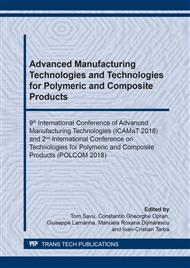p.417
p.427
p.437
p.445
p.455
p.465
p.475
p.483
p.493
Methods and Special Functions Bessel and Kummer Applied in Composites Diffusion Modelling
Abstract:
The oxygen diffusion is a natural phenomenon and a main factor during the atmospheric corrosion process. The phenomenon of oxygen diffusion takes place in the environment with different consequences: vital in medicine in relation with the oxygen diffusion in the blood, or negative in technical or industrial domains with catastrophic consequences due to corrosion. Diffusion modelling with applications for the analysis of the metal-composite interface, being subjected to corrosion in atmospheric environment for hybrid polymer structural composite products, is carried out with two remarkable equations: Fick’s second law or heat equation and the convective variant and the parabolic equation which introduces the diffusion coefficient in function of distance. In this paper we determine the solution of these equations using different mathematical methods. The state of oxygen concentration, modelled with partial derivatives, obtained theoretically, through oxides and metal layers, is experimentally validated in a practical case.
Info:
Periodical:
Pages:
465-474
Citation:
Online since:
June 2019
Authors:
Price:
Сopyright:
© 2019 Trans Tech Publications Ltd. All Rights Reserved
Share:
Citation:


